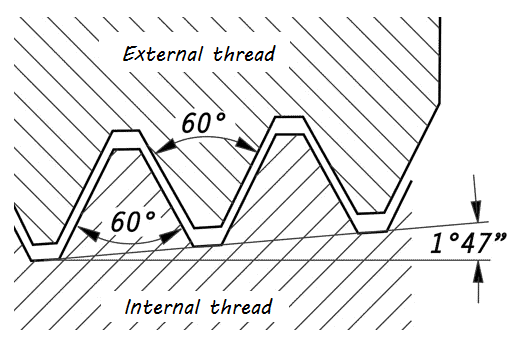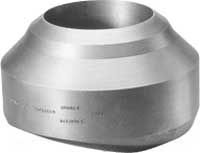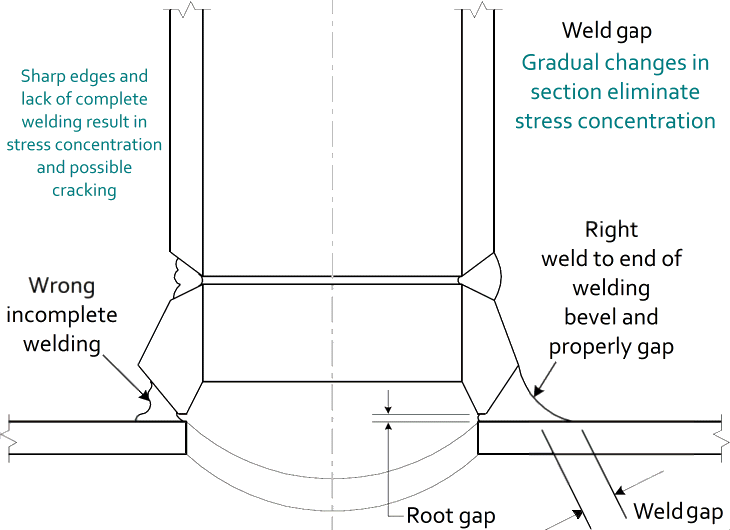Weldolet® - in details

Bonney Forge Corporation
Weldolets (collective name - O'lets) are typically used in high-pressure and high-temperature applications where a strong and reliable connection is required. Weldolets are also used in applications where a smooth transition between the run pipe and the branch pipe is important, such as in fluid flow applications.
A Weldolet fitting is one of the most common types of piping components. It is used to create branch connections from running pipelines to branch pipelines, primarily by using a butt fusion welding process, creating a 90° branch connection. Weldolets typically have both ends beveled, making them particularly suitable for connecting large bores to small bores in high pressure applications, especially those with a diameter greater than 2 inches.
Weldolet fittings are compatible with butt-weld joints and mirror the exhaust pipe to minimise stress and add extra strength to the joint. It is crucial to maintain the same or higher schedule for Weldolet fittings compared to branch pipes to ensure higher strength.
Weldolets come in both full-size and reduced-size variants, with the former matching the size of the branch pipe or main (e.g. a 6inch to 6inch branch) and the latter having a branch smaller than the branch pipe or main (e.g. 6inch to a size of e.g. 2inch).
Several common standards and codes govern the choice of Weldolets. In some cases, standard TEE fittings are used instead of O'lets, but O'lets remain the preferred choice because of their cost-effectiveness, light weight and ease of welding.
Weldolets are applied in scenarios where the bore of the branching pipe is smaller than that of the header or run pipe. Another method for branching pipe joints is by reinforcing pad, but this approach is usually more bulky and less cost-effective.
O'lets are designed according to the dimensions set out in the Piping Code ASME B31.3. These fittings, sometimes called Branch Connection Fittings or Outlet Fittings, include different types of O'lets available in the market.

Properties of Weldolets
- Weldolets have chamfered ends on both the run and branch sides, making them easy to weld to run and branch pipes.
- Weldolets are available in a wide range of sizes and schemes, making them suitable for a wide range of applications.
- Weldolets are strong and durable and they can withstand high pressures and temperatures.
- Weldolets provide a smooth transition between the run pipe and branch pipe, reducing stress concentrations and improving flow efficiency.
Applications of Weldolets
Weldolets are used in various industries, including:
- Oil and gas: Weldolets are widely used for connecting branch pipelines to main pipelines. They are ideal for both high and low pressure applications.
- Petrochemical industry: Weldolets are often used in refineries, chemical processing plants and other petrochemical facilities to facilitate pipeline branching for various processes.
- Power plants: Power plants often use Weldolets to connect additional pipelines for cooling systems, steam and other applications.
- Water and wastewater: In water treatment and distribution systems, Weldolets are used to create branches for various purposes, such as adding valves, meters or other components.
- HVAC systems: Weldolets can be found in heating, ventilation and air conditioning systems for branching pipes or ducts.
Advantages of using Weldolets
Strength and durability: Weldolets are made of high-quality materials and are designed to withstand high pressures and temperatures.
Smooth transition: Weldolets provide a smooth transition between the run pipe and branch pipe, reducing stress concentrations and improving flow efficiency.
Easy installation: Weldolets are relatively easy to install and weld.
Versatility: Weldolets are available in a wide range of sizes and materials, making them suitable for a wide range of applications.

Summary
Weldolets are a versatile and reliable type of pipe fitting that can be used in a variety of applications. They are strong and durable, provide a smooth transition between the run and branch pipe, and are relatively easy to install and weld. When selecting and welding fittings, it is important to take into account applicable standards and regulations.
Related Post(s)

The branch table defines the connection type between a Run Pipe and a Branch. The strength decreases due to the hole in the run pipe...

With large pipe dimensions, it is customary, to form a TEE intersection by cutting a hole in the straight run (the header) and welding in the leg perpendicular (the branch)...

Branch Connection fittings (also known as O'lets) are fittings which provide an outlet from a larger pipe to a smaller one (or one of the same size)...

ASME B31 Series of Codes and the ASME Boiler and Pressure Vessel Code set the requirements for reinforcement of branch connections and nozzles...